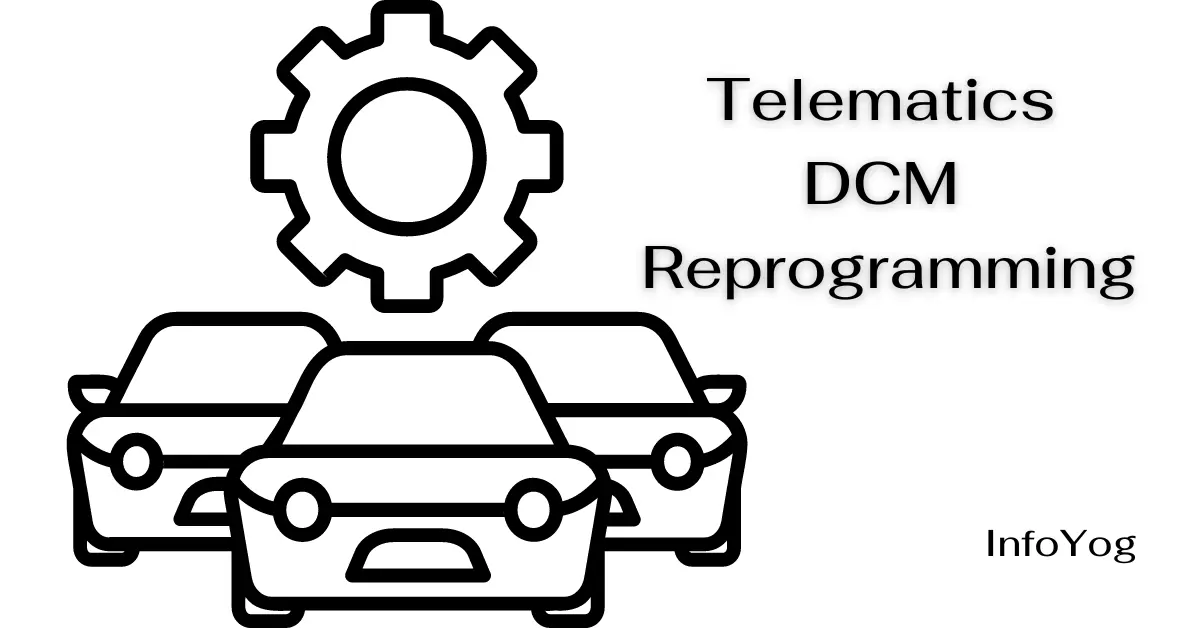Table of Contents
In the rapidly evolving landscape of automotive technology, the integration of telematics and vehicle connectivity has taken center stage. Telematics, the convergence of telecommunications and informatics, empowers vehicles to communicate, share data, and provide real-time insights. One vital aspect of telematics technology is the ability to reprogram the Digital Control Module (DCM), which lies at the heart of a vehicle’s electronic systems. This comprehensive article delves into the world of Telematics DCM Reprogramming, exploring its significance, benefits, challenges, and potential future implications for the automotive industry.
Understanding Telematics and DCM: A Synergistic Bond
Telematics refers to the integration of telecommunications and informatics technologies to enable data sharing between vehicles and external systems. This integration enables a wide array of applications such as remote diagnostics, navigation assistance, vehicle tracking, and more. Central to the functioning of telematics is the Digital Control Module (DCM), an integral component of a vehicle’s Electronic Control Unit (ECU) system. DCMs manage various electronic systems within a vehicle, including engine control, transmission, safety systems, infotainment, and more. Reprogramming the DCM involves altering its software to modify or enhance vehicle functionality.
Significance of Telematics DCM Reprogramming
The ability to reprogram DCMs remotely offers substantial benefits to both consumers and manufacturers alike.
- Enhanced Vehicle Performance: Reprogramming DCMs allows for fine-tuning vehicle parameters, such as engine performance, transmission behavior, and fuel efficiency. Manufacturers can issue updates to optimize performance, addressing issues and improving overall driving experience.
- Remote Diagnostics and Maintenance: Telematics DCM reprogramming enables manufacturers to diagnose and resolve issues remotely, reducing the need for physical visits to service centers. This contributes to faster and more efficient maintenance, reducing downtime for vehicle owners.
- Safety Improvements: DCM reprogramming can facilitate updates to safety systems, such as adaptive cruise control, automatic emergency braking, and lane-keeping assistance. This ensures that vehicles are equipped with the latest safety features and protocols.
- Environmental Benefits: By reprogramming DCMs, manufacturers can introduce eco-friendly driving modes or software updates that enhance fuel efficiency, reducing the vehicle’s carbon footprint.
- Customization and Personalization: Reprogramming allows manufacturers to offer customizable features and settings to vehicle owners, tailoring the driving experience to individual preferences.
- Recall Management: In case of recalls, DCM reprogramming can be used to address issues quickly and efficiently without requiring vehicles to be physically brought to service centers.
Challenges and Considerations
While telematics DCM reprogramming presents numerous advantages, it also introduces certain challenges and considerations.
- Security Concerns: Remotely reprogramming DCMs necessitates robust cybersecurity measures to prevent unauthorized access or tampering. Ensuring data encryption and secure authentication protocols are vital to protect both the vehicle and user data.
- Data Privacy: The collection of vehicle data for reprogramming purposes raises concerns about data privacy. Manufacturers must establish transparent data usage policies and adhere to privacy regulations to safeguard user information.
- Compatibility Issues: DCM reprogramming must account for compatibility with various hardware configurations and vehicle models. Ensuring smooth updates across diverse vehicles can be technically complex.
- User Acceptance: Some vehicle owners may be hesitant to embrace remote updates due to concerns about control and unfamiliarity with the technology. Manufacturers must educate users about the benefits and security of DCM reprogramming.
The Future Landscape
As technology continues to advance, the role of telematics DCM reprogramming is poised to expand.
- Over-the-Air Updates: Over-the-air (OTA) updates will become more prevalent, allowing manufacturers to seamlessly send software updates directly to vehicles. This eliminates the need for physical visits to service centers and accelerates the distribution of enhancements.
- Autonomous and Connected Vehicles: Telematics DCM reprogramming will play a critical role in the development of autonomous and connected vehicles. Updates to navigation systems, sensor calibration, and communication protocols will be vital for ensuring the safe operation of these advanced vehicles.
- Ecosystem Integration: DCM reprogramming will likely integrate with broader ecosystems, including smart city infrastructure and traffic management systems. This integration can contribute to more efficient traffic flow and enhanced vehicle-to-infrastructure communication.
- Subscription-Based Models: Manufacturers might introduce subscription-based models for premium features and updates. This can provide an ongoing revenue stream and incentivize users to opt for the latest enhancements.
Conclusion
Telematics DCM reprogramming stands at the intersection of automotive technology and connectivity, ushering in a new era of enhanced vehicle performance, safety, and convenience. As manufacturers refine their capabilities in securely updating and customizing DCM software, vehicle owners can look forward to a future where their driving experience evolves through the seamless integration of cutting-edge technology. Nonetheless, as with any technology, careful consideration of security, privacy, and user acceptance will be crucial in realizing the full potential of telematics DCM reprogramming.

